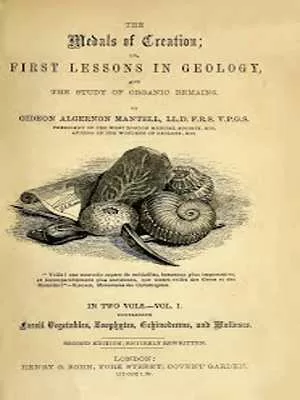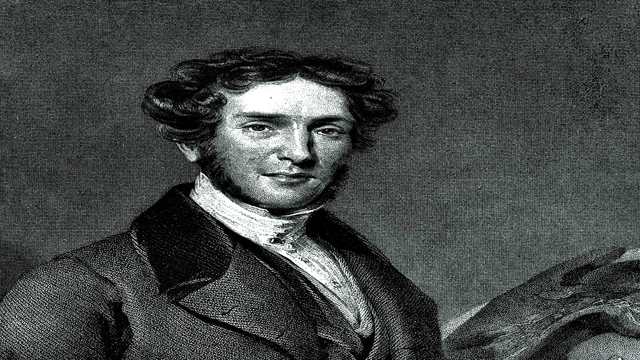Discover the Untold Story of Gideon Mantell’s Rise and Fall!
In the world of paleontology, few names shine as brightly as that of Gideon Mantell, the man who first identified the Iguanodon and played a pivotal role in the early study of dinosaurs. However, his story is not just one of scientific triumph; it is also a tale of betrayal, hardship, and the darker side of scientific rivalry.
Born in Lewes, Sussex, in 1790, Mantell’s journey from a passionate amateur geologist to a celebrated scientist is both inspiring and tragic.
A Chance Discovery
The story begins in 1822, when Mantell’s wife, Mary, stumbled upon a peculiar brown stone while walking near their home. This stone turned out to be a tooth from a large herbivorous reptile, which Mantell later identified as belonging to the Iguanodon. Despite his enthusiasm, Mantell faced skepticism from the scientific community. He sent the tooth to Georges Cuvier, the leading comparative anatomist of the time, who initially dismissed it as a rhinoceros tooth. However, Cuvier later revised his opinion, declaring it to be something entirely different. Unfortunately, this revision never reached Mantell, who continued to face ridicule from his peers.

Early Life and Medical Career
Gideon Mantell was the fifth of seven children born to a shoemaker. His fascination with fossils began in childhood, and he started collecting them as a young boy. After apprenticing with a local surgeon, he received formal medical training in London and became a Member of the Royal College of Surgeons in 1811. Returning to Lewes, he partnered with his former mentor, James Moore, and quickly tripled the practice’s income through his dedication and hard work.
While managing his medical practice, Mantell continued to study geology and excavate fossils from local pits. His first book, The Fossils of the South Downs (1822), showcased his findings and established him as a serious contributor to the field.
The Rise to Fame
Mantell’s research revealed that the fossil bones he unearthed belonged to terrestrial and freshwater animals, challenging the prevailing belief that only marine remains existed in the region. His persistence paid off when Cuvier confirmed his theories, allowing Mantell to present his findings to the Geological Society of London, where he had previously been dismissed as an amateur.

In 1825, Mantell presented a groundbreaking paper titled Notice on the Iguanodon, a Newly Discovered Fossil Reptile, which catapulted him to fame. He was elected a Fellow of the Royal Society and became an Honorary Member of the Institute of Paris. However, despite his success, Mantell struggled financially, as many of his books were too expensive for the average reader.
A Public Museum and Personal Struggles
Mantell’s newfound fame led him to move to Brighton, where he opened his fossil collection to the public. However, his generosity came at a cost. The influx of visitors overwhelmed his medical practice, and he eventually had to sell his collection to the British Museum to cover his debts. In his journal, he lamented, “And so passes away the labour of 25 years!!! G. A. MANTELL. But I will begin den ovo!”
His personal life also suffered; Mary left him in 1839, taking their four children with her. Mantell faced further tragedy when his daughter, Hannah, died of tuberculosis shortly after.
Rivalry with Richard Owen
As Mantell continued his work, he found himself increasingly at odds with Richard Owen, a prominent figure in the scientific community. Owen had coined the term “Dinosauria” in 1841, and his influence was growing. While Owen believed the Iguanodon to be a heavy quadruped, Mantell argued that it was bipedal. This scientific rivalry intensified as Owen began to rewrite history, claiming credit for Mantell’s discoveries and using his influence to undermine Mantell’s work.

In a tragic turn of events, Mantell suffered a horrific accident in 1841 when he fell from his carriage and became entangled in the reins, resulting in severe spinal injuries. Despite his debilitating condition, he continued to work, but the pain limited his activities. Owen seized this opportunity to further diminish Mantell’s reputation, claiming that he and Cuvier had discovered the Iguanodon and misrepresenting Mantell’s findings.
Untimely Death of a Pioneer
In 1852, Mantell died from an unintentional overdose of opium, which he had taken to manage his chronic pain. Shortly after his death, an anonymous obituary appeared in the Literary Gazette, disparaging Mantell’s achievements and labeling his scientific work as mediocre. The style of the obituary suggested it was penned by Owen, adding insult to injury.

After Mantell’s death, a section of his deformed spine was removed and preserved, eventually coming into the possession of Richard Owen, who was then the Director of the Hunterian Museum. This act symbolized the ultimate betrayal of a man who had dedicated his life to the pursuit of knowledge.
Conclusion: A Legacy of Resilience
Gideon Mantell’s story is a poignant reminder of the challenges faced by pioneers in science. Despite his groundbreaking contributions to paleontology, he endured ridicule, betrayal, and personal tragedy. His legacy, however, lives on through the Iguanodon and the field of paleontology he helped to establish.
As we reflect on Mantell’s life, we must recognize the importance of perseverance in the face of adversity. His journey serves as an inspiration for future generations of scientists, reminding us that the pursuit of knowledge often comes with significant challenges, but the rewards can be monumental.

